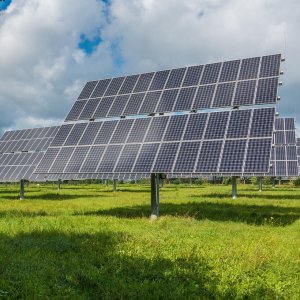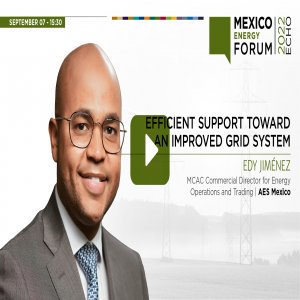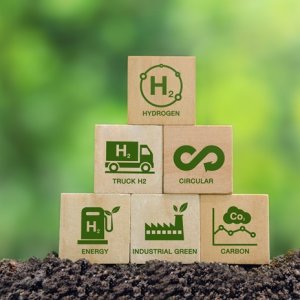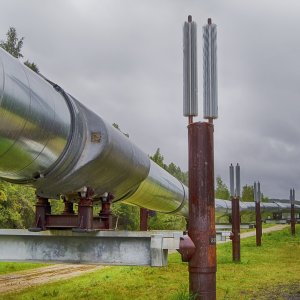Battery Storage Driving Energy Transition

STORY INLINE POST
Q: What were the biggest challenges Dynapower had to overcome in 2021?
A: Our biggest challenges materialized around the supply chain, an issue that impacted most industries worldwide. Some setbacks were related to material shortages and delays. Furthermore, the company experienced multiple issues related to slowdowns in freight, including interruptions, as well as exceedingly long and unpredictable lead times. For Dynapower, these challenges required considerable planning to understand the options and how to work creatively with partners and customers to mitigate these adverse effects.
Q: How has Dynapower adapted its procedures to face these supply chain shortages and production delays?
A: One factor we changed to better face supply chain issues was to improve our planning and business forecasting. Dynapower worked to better understand where the business is going and what the future demand may be. We needed to go back to our suppliers and place larger orders that looked further into the future so that we could secure supply in the short term. From a purchasing perspective, it was a major procedural change, where we were willing to adapt to encourage our suppliers to prioritize their business with us.
Q: How does storage provide added value for renewable energy producers?
A: Storage is an enabling technology for the renewable energy industry because it allows renewable generation to reach a higher penetration in the market. Storage is also helping renewable projects find other economic value streams, enhancing their economic viability. Photovoltaic (PV) solar energy is the classic example: when coupling storage with PV, companies can bid their solar output into firm capacity markets, guaranteeing capacity to supply power during the night, which makes solar much more valuable.
Conversely, renewable energy can also enable storage, such as with hydrogen-based storage. Renewable resources are helping this flourish. The cost of hydrogen electrolysis using low-cost solar as the energy source, is approaching the cost of traditional hydrogen production. Thanks to these attractive costs, hydrogen storage is becoming more economically viable.
Q: How fast are storage solutions being implemented in the Mexican market?
A: Storage solutions are increasingly starting to emerge in the Mexican market, though we would like to see a much faster acceleration. More projects of different scales have materialized recently, both larger projects and behind-the-meter projects, which are smaller-scale, up to 0.5MW. These smaller projects are experiencing a larger demand, though we are uncertain of the Mexican market’s overall potential.
In the case of behind-the-meter markets, many people have noticed that prices are coming down to the point where savings make sense economically.
Q: How does hydrogen storage make power generation more efficient?
A: Dynapower’s role in hydrogen production is focused on the power supply for electrolysis. We work with partners that manufacture the electrolyzers and help them couple this to the grid or solar energy assets. A truly exciting prospect is to improve the efficiency of these hydrogen projects by directly coupling solar to hydrogen production, as opposed to the traditional method where solar energy is distributed from the grid to the hydrogen plant, going from DC to AC and back to DC electricity to produce hydrogen.
Q: What would it take for a battery production industry to develop further in Mexico?
A: The lithium market is dominated by mega-factories in China. For logistical and geopolitical reasons, US developers are keen to find a North American lithium supplier. The US market is the leading global market for battery demand. Therefore, there are many opportunities for Mexico to develop battery exports through the USMCA. Large lithium-based battery energy storage system (BESS) factories can be constructed within two years, so Mexico could develop the industry in the short term.
Q: How can the grid benefit from the further implementation of battery energy storage systems (BESS)?
A: For energy transmission, the rapid response of BESS to frequency and voltage fluctuations in the grid make them an effective tool for grid operators. However, for batteries to be effective, they need to be big enough, as well as widely available. When we talk about batteries behind the meter, the conversation changes. Here, batteries protect local manufacturing facilities against disruptions, helping to insulate facilities and enabling their continued functioning during blackouts. Furthermore, large industrial facilities often have poor power factor. Batteries can be used to mitigate that and improve the energy quality, which decreases their electricity rates as well.
Q: What are Dynapower’s main objectives for 2022 in the Mexican market?
A: We are working with our Mexican partner, EnerSave, to develop projects for both behind-the-meter and front-of-meter applications. For the former, we are looking toward large industrial and commercial facilities that require storage for resilience or power quality improvements. We also collaborate with EnerSave in talking with solar developers about utility-scale projects where developers aim to couple PV with storage. We hope in 2022 to break ground at a number of sites.
Dynapower is a US company founded in 1963 that focuses mainly on power electronics. Its Energy Storage Group was founded in 2007 and boasts a portfolio of around 1GW of energy storage, with over 150 projects installed in 13 countries.







 By María José Goytia | Journalist and Industry Analyst -
Fri, 05/06/2022 - 11:24
By María José Goytia | Journalist and Industry Analyst -
Fri, 05/06/2022 - 11:24
















